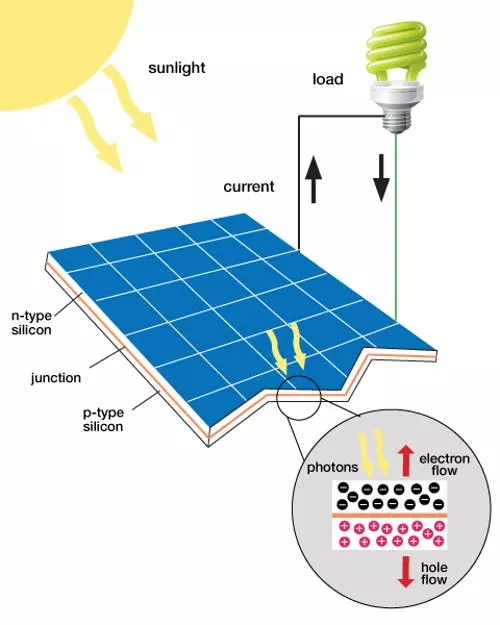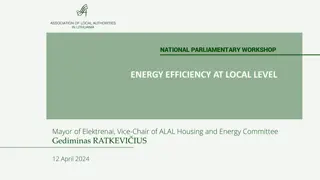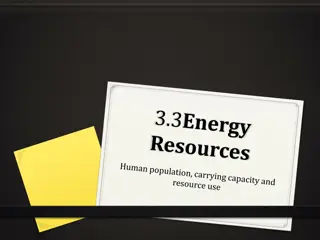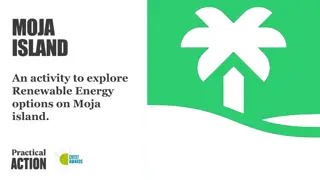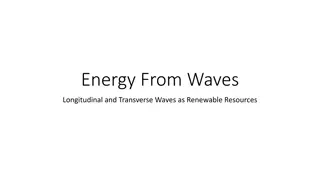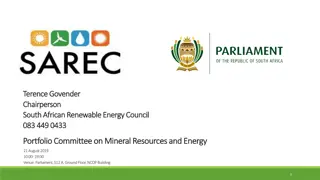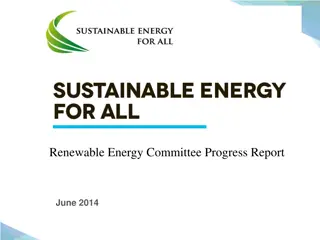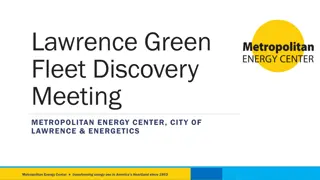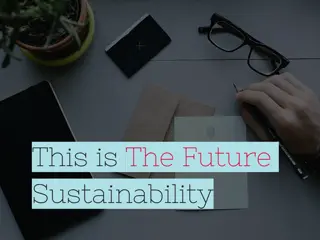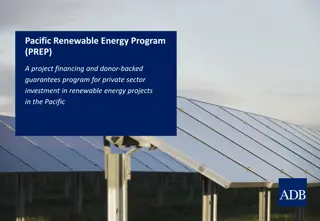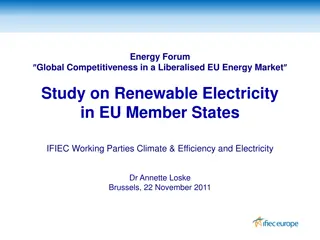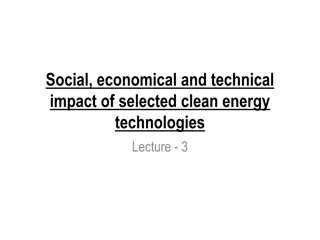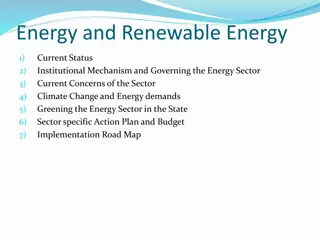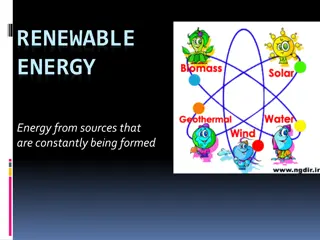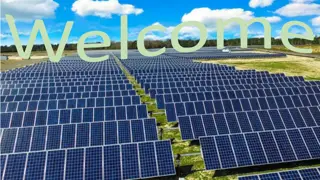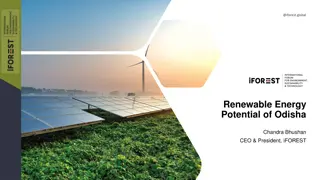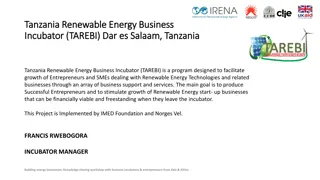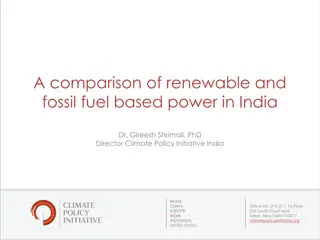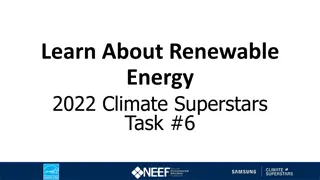Sustainable Vehicle Lab - Exploring Renewable Energy Technologies
Sustainable Vehicle Lab aims to test solar panels, wind turbines, fuel cells, and electrolytic cells to design a sustainable energy car. The lab explores renewable energy sources like solar and wind power, along with technologies such as hydrogen fuel cells. Students experiment with electrolytic cells and electronic components to create innovative solutions for sustainable transportation.
Download Presentation

Please find below an Image/Link to download the presentation.
The content on the website is provided AS IS for your information and personal use only. It may not be sold, licensed, or shared on other websites without obtaining consent from the author. Download presentation by click this link. If you encounter any issues during the download, it is possible that the publisher has removed the file from their server.
E N D
Presentation Transcript
Overview Experimental Objective Background Information Materials Procedure Assignment Closing
Experimental Objective Test the capabilities of solar panels and wind turbines Test the capabilities of the citrus cells, hydrogen fuel cells and capacitors Design a sustainable energy car to compete against the other groups
Background Information Electrolytic Cells Renewable Energy Solar panels Wind-turbine technology Hydrogen fuel cells Electronic Components
Electrolytic Cells Uses two different electrodes and an electrolytic solution Applications in industry include electrorefining and production of high-purity Al, Cu, Zn, and Pb Electrolytic Solution Non-metallic part of circuit Electrolytes dissociate free ions to create an electrically conductive solution Lemon juice used as electrolyte Electrodes Two metals of differing electron affinity
Renewable Energy Harnessed from natural resources Clean energy sources Sources for energy are abundant in supply[1]
Solar Panels Made fromsilicon or copper indium gallium (di)selenide (CIGS) Converts Sunlight to electrical current Absorbed sunlight excites electrons to allow freedom of motion (generates an electric current)[2]
Wind-Turbine Technology Use pressure difference generated by the wind to spin the turbine blades Converts mechanical energy into electrical energy The wind vane is use to determine the direction the wind-turbine will face[3]
Hydrogen Fuel Stores chemical energy and converts it into electrical energy Types of fuels used includes (but not limited to) hydrogen, methane, and gasoline Reversible fuel cells can separate water into hydrogen and oxygen, then use it to generate electrical energy [4]
Capacitors A capacitor is an electrical device used to store charge Capacitors can be connected in parallel (increases charge stored) and in series (increases voltage stored)[5]
Capacitors Store electrical energy 1F (Farad) Polarized Capacitor Positive Negative
Capacitor Charging Capacitor charge limit is restricted by charge voltage Maximizing applied voltage maximizes energy stored Capacitor is charged in time increments called the time constant (tau): =RC R=resistance C=capacitance
Percentage Charged Charge is logarithmic It takes approximately 4 to charge the capacitor Ex:
Materials Alligator cable sets Standard Lego Car Chassis plus Lego parts kit Mini Electric propeller LED (Light Emitting Diode) Lego to Alligator Cable Clip Connector Scissors Tape Horizon Wind-Turbine Solar Battery Panels Adjustable Table fan Heat Lamp DMM (Digital Multi-meter) Music Voltmeter 3V DC Motor Horizon Hydrogen Fuel cell 1 Farad 2.5V Capacitor
Materials Price List Horizon Wind-Turbine ($5.00/each) Solar Battery Panels ($10.00/each) Horizon Hydrogen Fuel cell ($12.00/each) 1 Farad 5.5V Capacitor ($3.00/each) Alligator cable sets ($0.50/each pair) Standard Lego Car Chassis plus Lego parts kit (only one kit) Lego to Alligator Cable Clip Connector ($0.10/each) Tape ($0.10/feet)
Procedure Part 1: Test the power storage devices Lemon juice Hydrogen fuel cell Capacitor Part 2: Test the assigned power source using music voltmeter Solar panel Wind-turbine Part 3: Design a sustainable energy car using the power sources and power storage devices of your choice
Procedure Here is an inspiration for your design!
Competition Rules Power storage devices must be contained in the car The only power sources allowed are the wind-turbine and solar panel The sustainable energy car may not be pushed or launched The sustainable energy car should not be touched after it has started to move The car will run for up to five minutes or until the car comes to a stop
Competition Ratio ???????? [??] 1 ? + ????[?] 100 ?? = ???? [$]+ ????????[??] Where distance is measured in feet (1 tile = 1 ft), time is time elapsed for the trial, and cost is the total cost of constructing the car
Assignment: Report Individual lab reports Title page Discussion of topics in the manual Include a picture of your vehicle Scan in lab notes (ask TA for assistance) TA must initial that table and graph were completed
Assignment: Presentation Team presentation State rules of competition Describe your design and its concepts Include table of class results, cost and photo/video of design How could your current design be improved? Refer to Creating PowerPoint Presentations found on EG website
Closing Have all original data signed by TA Submit all work electronically Clean up workstations Return all materials to TA
Works Cited 1. Eriksson, J.. "Renewable energy vs. fossil fuel." Renewable power news. N.p., 2010. Web. 26 Jul 2012. <http://www.renewablepowernews.com/archives/1413>. 2. http://www.agc-flatglass.com/AGC-Flat-Glass/English/Other/News- Overview/News-Detail/page.aspx/1014?newsitem=1273. 3. . The structure of a modern wind turbine an overview. N.p., n.d. Web. 26 Jul 2012. <http://www.wwindea.org/technology/ch01/en/1_2.html>. 4. Reg Tyler, . "Types of Fuel Cells." Energy efficeny and renewable energy. U.S. Department of Energy, 2011. Web. 24 Jul 2012. <http://www1.eere.energy.gov/hydrogenandfuelcells/fuelcells/fc_types.html>. 5. . Rotational Equilibrium. WWU, n.d. Web. 26 Jul 2012. <http://faculty.wwu.edu/vawter/PhysicsNet/Topics/TopicsMainTemplate.html>. 6. http://www.horizonfuelcell.com/files/Education_Series_PDF.pdf






